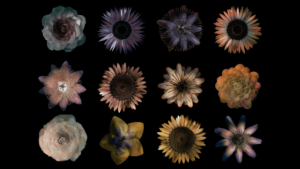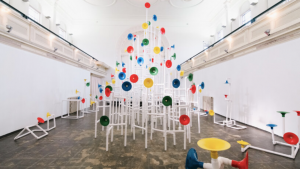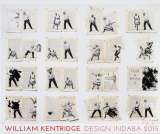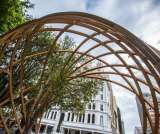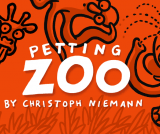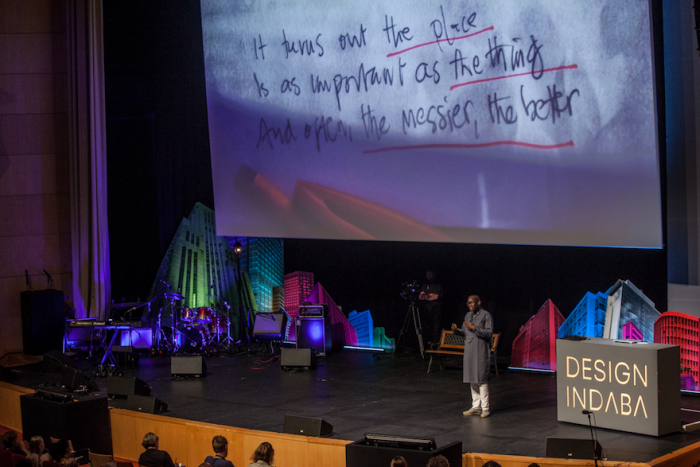
Design Indaba is a private company. We’re not a government agency. We’re not an international conglomerate. We’re not a charity. We’re not an NGO. We are a commercial enterprise and we need to make sure our annual conference is priced accordingly to allow us to continue to run it. As it is, putting on the DI Festival is an event of such logistical and financial magnitude that we seek the sponsorship of major corporates to make it possible.
Without the annual conference, whose ticket price has created outrage in a recent flurry of tweets by a collective called the “Change Agents”, there would be no event at all. In turn, you as the public can vote with your feet. You can stay away if you find it overpriced, or you can attend any one of a number of events ranging in price that we offer during the two-week period of the festival – as droves of people do year after year.
Let’s once and for all put this claim to bed that we are an “elitist” institution. Yes, the main hall conference ticket of R7 900 is expensive for South Africans. But there are no annual South African conferences in any sector that can be compared with Design Indaba – three full-day events that feature more than 30 international speakers and performers.
The Integrated Marketing Communication Conference is a local two-day advertising, direct marketing, public relations meeting that features eight speakers – all South African. Full price tickets for that cost R4 500.
Comparable conferences in Europe and the States are commensurate or many multiples of our ticket price. One need only to look at the price for the TED conference to verify that. The five-day Technology, Entertainment and Design (TED) Conference is held annually on the west coast of the United States with more than 70 speakers. The next one is in March in Vancouver. The “conference standard” ticket costs the equivalent of R97 000 (rounding down) – equivalent to almost R20 000 a day.
What Design Can Do is a two-day conference in Amsterdam with about two-thirds fewer speakers than appear at Design Indaba. Non-early bird tickets cost the equivalent of R4 700 (rounding down) – equivalent to about R2 350 a day. One-day conference tickets for Design Indaba are R3 065.
We face the same baseline costs that these prestigious US and Europe-based conferences face: global aviation prices for air tickets, top hotel accommodation, luxury transport for the speakers while they’re in town. In fact, we have a much more expensive proposition than these conference organisers as we are a long-haul destination for almost everybody invited to speak and our currency is a supremely weak one in comparison with the dollar, sterling and euro. These costs rise every year and therefore so too does our ticket price. That’s the cost of production.
Having said all of that, there are ways to cut down on the main hall conference ticket price dramatically. Early bird tickets are discounted by R1 000 – more than 10% off the ticket price. If delegates include Design Indaba in their workplace skills plans, they can claim up to 60% of the costs back from SETA. Alumni to the conference (those who have attended at least twice before) get 15% off.
For the “99% of creatives who cannot afford Design Indaba”, writes Deon Robbertze on our Facebook page, that we are “forcing” to buy a R7 900 ticket, we ask who exactly are we forcing? We don’t expect students to be able to afford the main hall ticket which is why we offer simulcast. And for those that can’t afford simulcast, we offer, in due course, unbridled online access to all of the talks from the conference. Until then, young creatives can access every talk from the conference of the past decade, not to mention exclusive interviews with the speakers and other leading international designers. This is offered, on our website, for free, gratis and for nothing.
Just one look at our website – a totally free resource rich in articles, interviews, video talks (from the past decade of conferences) – will reveal the stories of established and emerging locals and foreigners doing extraordinary things with design: pursuits that are changing their communities. It also acts as a comprehensive online catalogue of makers. There is no publication like Design Indaba in South Africa. And it’s a free public resource.
We don’t charge a subscription service; we don’t have a pay wall. You can watch and read absolutely everything Design Indaba has ever created content wise for free, as much you want. You can even download the talks in high resolution and watch them on your television set. For those who don't have Internet access, you can download the app for free and go to a library or coffee shop with WiFi and download the talks in low res.
We challenge any of the Change Agents to identify another media outlet that offers so much substantial, exclusive content – augmented daily – for free, all the time?
To explain why we only open Cape Town simulcast ticket sales at a later stage, we need to fill the main auditorium in order to make the simulcast possible. This is to answer Camilla Garay on our Facebook page, who wrote that she is “Feeling insulted and somewhat mocked by the Design Indaba Conference ticketing this year” for operating in this way – main tickets first, simulcast tickets later. There can be no simulcast without the main conference, Camilla. It’s as simple an operation as that.
Might it not have dawned on our critics that without the money raised from the conference ticket sales, we could never attract the calibre of world-class thinkers that we do? Without them, we have no conference and no event at all. The conference is the cornerstone of the whole festival: without heavy-hitting designers, people will not come to the conference. And in order to get the heavy-hitting designers to come to the conference, we need to make a commercial calculation regarding ticket prices so that it’s a feasible event to organise.
We host the simulcast in a handful of South African cities and, from this year, at our initiative, the conference content broadcast at the simulcast will form part of the curriculum of each of the universities where the simulcasts are held. Hosting these simulcasts also eases the financial burden on young creatives in or near Johannesburg, Durban, Port Elizabeth and Potchefstroom: they’re relieved of the costs of having to fly to Cape Town to stay there for the duration of the event.
And if one breaks down the cost of each presentation at simulcast by the sheer number of presentations, it amounts to less than R30 per presentation. Panel discussions at the Franschhoek Literary Festival and the Open Book Festival – Cape Town’s two premier annual literary festivals that feature a mix of local and international authors – cost R60 and R50 per session respectively.
On the Thursday of the conference, all delegates – main auditorium and simulcast – gain free access to the expo. Main ticket holders also get lunch and multiple refreshment breaks daily, free access to Design Indabar (a bar across the street from the conference centre that hosts live musical entertainment) as well as free entry to the Design Indaba Party with a glorious lineup of African musical talent. For non-conference delegates, entrance to the Indabar music performances costs R20 daily. For non-conference delegates, entrance to the Design Indaba Party, with musical acts performing from 8pm till about 4am the following morning, costs R50 a ticket.
During the time of the conference, we host a film festival along with the music festival. The films are sourced from all over the world and have never been screened locally before. Similarly, the African musicians we round up to perform during three consecutive nights would otherwise likely not make it to South Africa – both for the cost of such an exercise and for lack of an organiser to showcase them in the way we do. We add South African musicians to the programme to bolster their exposure too. And all for considerably less than the cost of a ticket to a commensurate music festival held locally. Again we challenge any of the Change Agents to say the cost of the tickets for a roundup of musicians like that isn’t affordable and eminently reasonable.
We’re also puzzled how we can possibly be “scaring away more talent, up-and-comers, underprivileged, independent quirkiness, than before,” as Camilla Garay also writes on our Facebook page, when every year we offer 40 up-and-comers prolific of “independent quirkiness” the opportunity to be Emerging Creatives. The cost of their exhibiting at the expo is free and they get mentored by professional designers, to boot, at our arrangement. That we have hundreds of applications for these 40 places is testament to the fact that we are an attractive platform for the very people she describes.
At the Design Indaba Expo of 2013, Kat Pichulik was one of the Emerging Creatives. She was quoted recently in the Cape Argus: “To have a weekend with R65 000 worth of accessories sold really allowed me to expand. Afterwards I could up my production, buy more materials in bulk and I hired another person.”
In 2013 Pichulik rented a trestle table in a shared studio space with six other designers. In 2014 she moved her team of ten into a 106-square-metre space that’s all their own.
Pichulik was one of 486 exhibitors at the expo in 2013, of which 116 other designers were also new. At the expo last year, there were 509 exhibitors of which 254 were new. For the expo in February, a quarter of all confirmed exhibitors so far are first timers. There have been countless other reports of the expo catapulting these cottage industry players into small and medium sized business ownership. For designers who have yet to showcase their wares in public, it’s a unique opportunity to interact with thousands of potential customers and network with hundreds of their design peers. Design Indaba does not levy a turnover-based fee on our exhibitors. Apart from providing a promotional platform, which they purchase for the duration of the expo, we do not earn any income from their sales or any other ancillary fees.
The expo attracts international buyers, largely because it is linked to a world-class international design festival. Last year there were 509 exhibitors and 806 buyers, 211 of which were international. And, again, without the cost of the conference ticket and the attendant masses in the conference centre, this would be an impossible expo to stage from a cost point of view.
According to a report compiled by Barry Standish in association with UCT’s Graduate School of Business, exhibitors at the expo in February last year earned R201.9m in total income from business orders from buyers and sales to the public. Design Indaba created 575 direct jobs and 571 indirect jobs last year. In the past six years, Design Indaba has generated R1.7 billion to SA’s GDP.
So, to answer the Change Agents' tweet:
“Design Indaba price is eliminating disadvantaged from any access. Where’s the skills development?”
The staging of the expo and the Emerging Creatives platform is our skills development, not to mention access to a multimedia portal created for the general public’s daily consumption where we seek to expose them to world-class thinkers and ideas.
So, to say that Design Indaba is not deeply committed to developing young, up and coming, disadvantaged people in this country is a deeply disingenuous claim. Promoting entrepreneurship is the lifeblood of what we do. It’s also the very definition of what we are.
Design Indaba is a company that came about because one South African had a vision to promote design in this country, to help drive awareness of the importance of design: not only in the creation of small and medium sized businesses but to illustrate how design used cleverly can effect revolutionary social and environmental change.
Through hard work and hustle, Design Indaba is now a medium sized business itself. It’s a company that is an entrepreneurial success story in its own right. Where there was nothing, there is now a thriving company providing employment, paying taxes and putting on an annual festival that is unrivalled in South Africa.
As for Change Agents' call to “Occupy Design Indaba”, to make a comparison with Occupy Wall Street is odious indeed, misinformed and in poor taste.
We find it ironic that the tagline on the website of Change Agents reads: “To create change you need to communicate solutions that prove that change is possible, profitable and achievable. Our wish is that we all become CHANGE AGENTS in our businesses and communities. We want everyone to be a CHANGE AGENT.”
Design indaba is a change agent. Creating one of the most exciting, exhilarating, stimulating events on the Cape calendar and bolstering hundreds of local businesses while launching the careers of tens of emerging designers is creating change. What the government talks about doing – nurturing and fostering entrepreneurship – we actually do.
On the other hand, launching vitriolic attacks on private companies looking to be commercially viable and do good is not creating change. It’s creating havoc.


